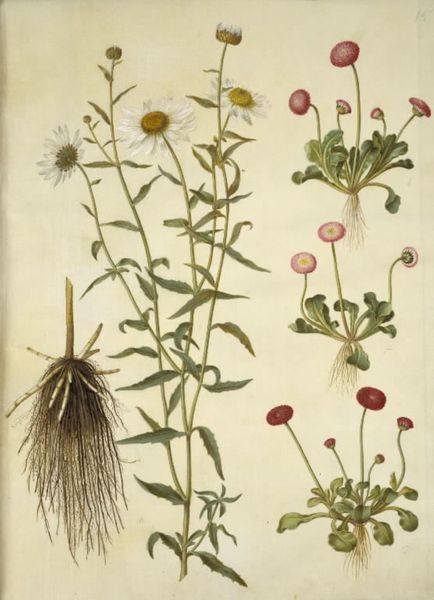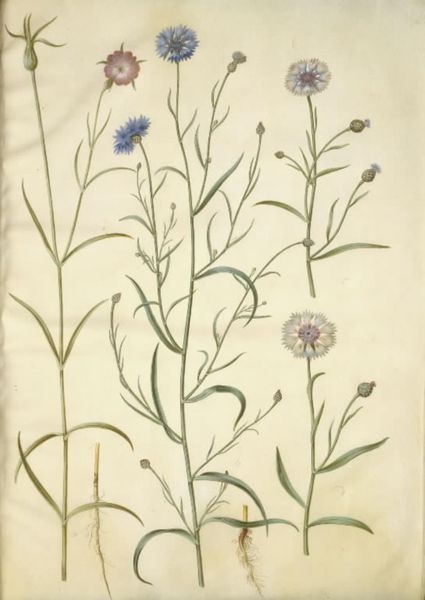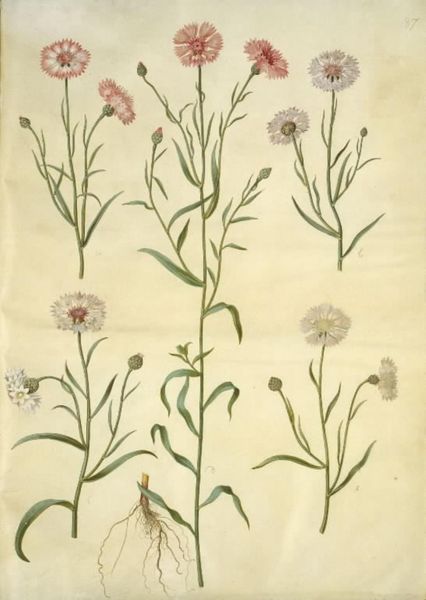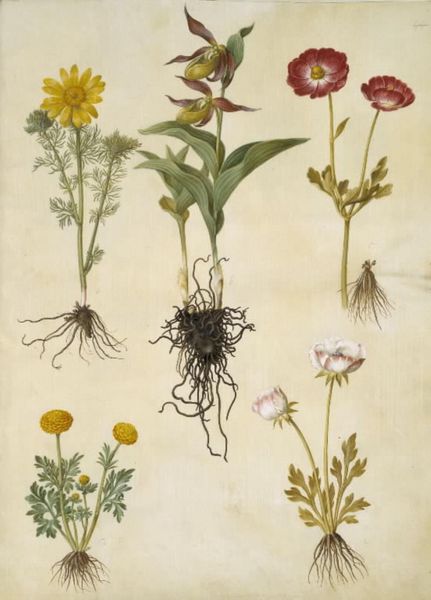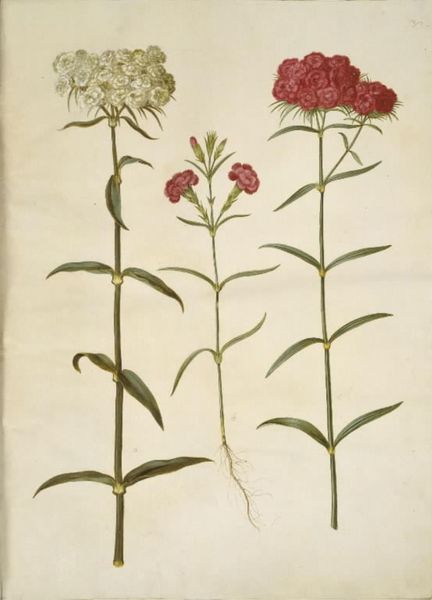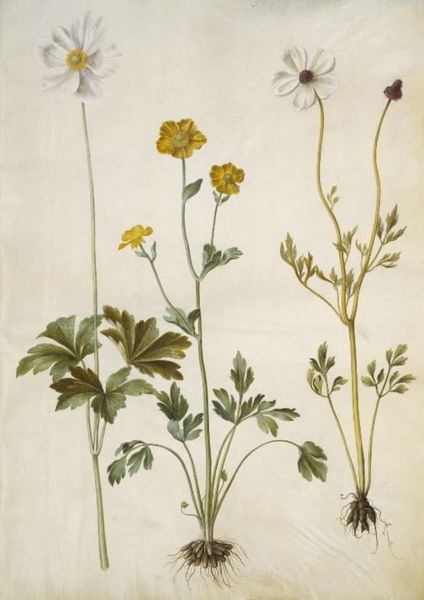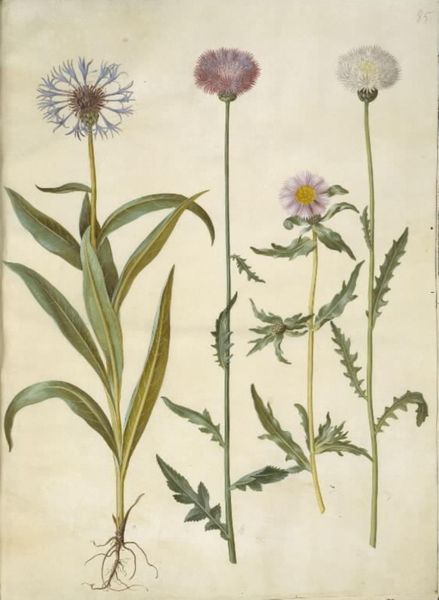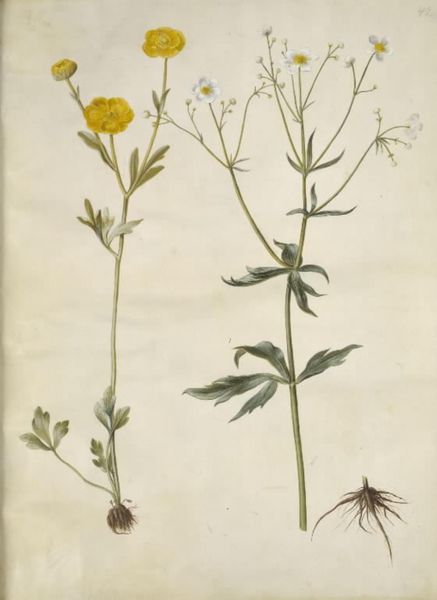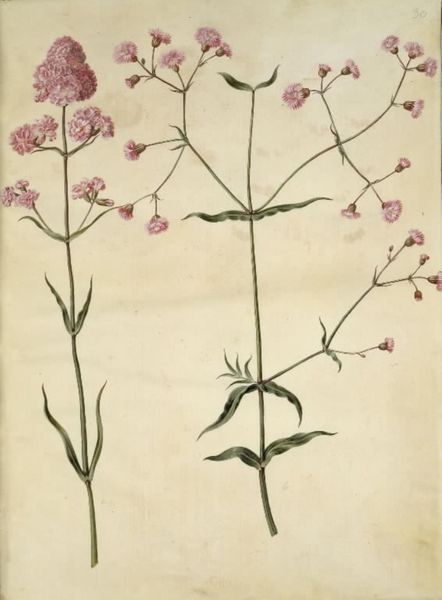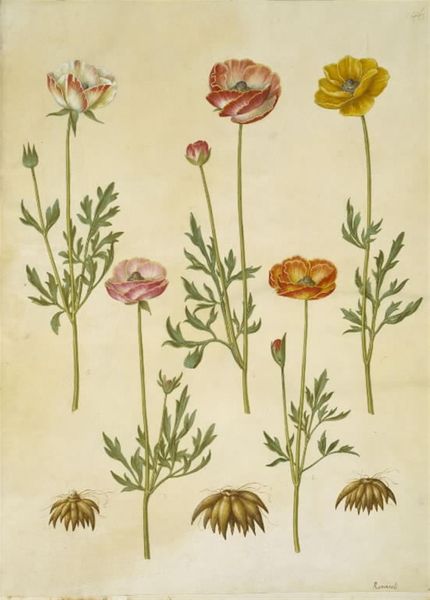
Scabiosa atropurpurea (enkeblomst); Scabiosa columbaria (due-skabiose) 1649 - 1659
0:00
0:00
drawing, gouache, watercolor
#
drawing
#
gouache
#
11_renaissance
#
watercolor
#
watercolour illustration
#
northern-renaissance
#
botanical art
Dimensions: 505 mm (height) x 385 mm (width) (bladmaal)
Editor: This is "Scabiosa atropurpurea (enkeblomst); Scabiosa columbaria (due-skabiose)," a watercolor and gouache drawing made sometime between 1649 and 1659 by Hans Simon Holtzbecker. It's striking how precisely the botanical details are rendered, particularly the delicate roots and varied textures of the flower heads. What structural elements stand out to you? Curator: The composition certainly favors a clean linearity, wouldn't you agree? Notice how the artist uses vertical lines, primarily the stems, to create a sense of order and rigidity. Then contrast this with the organic and slightly chaotic root systems depicted at the base. Consider how the restrained color palette contributes. Does this emphasis on precise botanical structure give you a clue as to the intention of the artwork? Editor: It does make me wonder about the role of scientific illustration at the time. The accuracy must have been paramount. Yet, is there anything beyond the scientific? Curator: Observe the negative space surrounding each plant. It serves to isolate and accentuate each specimen. The controlled application of watercolor washes, and the rendering of depth – or lack thereof – creates an intriguing flatness. Think about how these elements force us to analyze each component in isolation. Can you see the use of line and color to establish a visual hierarchy here? Editor: I see that the darker blooms grab the eye, and that the detailed rendering almost begs for closer inspection. It is less about capturing light and shadow and more about documentation, or rather, appreciation through that act. Curator: Precisely. Form serves function here. The aesthetic choices all contribute to a clear, detailed representation ideal for scientific study. However, this in turn creates its own aesthetic impact through purity of form. Editor: I understand now! Looking at how the botanical structure drives the form, and the interplay between precision and organic form. It offers a fresh perspective on integrating science and art!
Comments
No comments
Be the first to comment and join the conversation on the ultimate creative platform.
